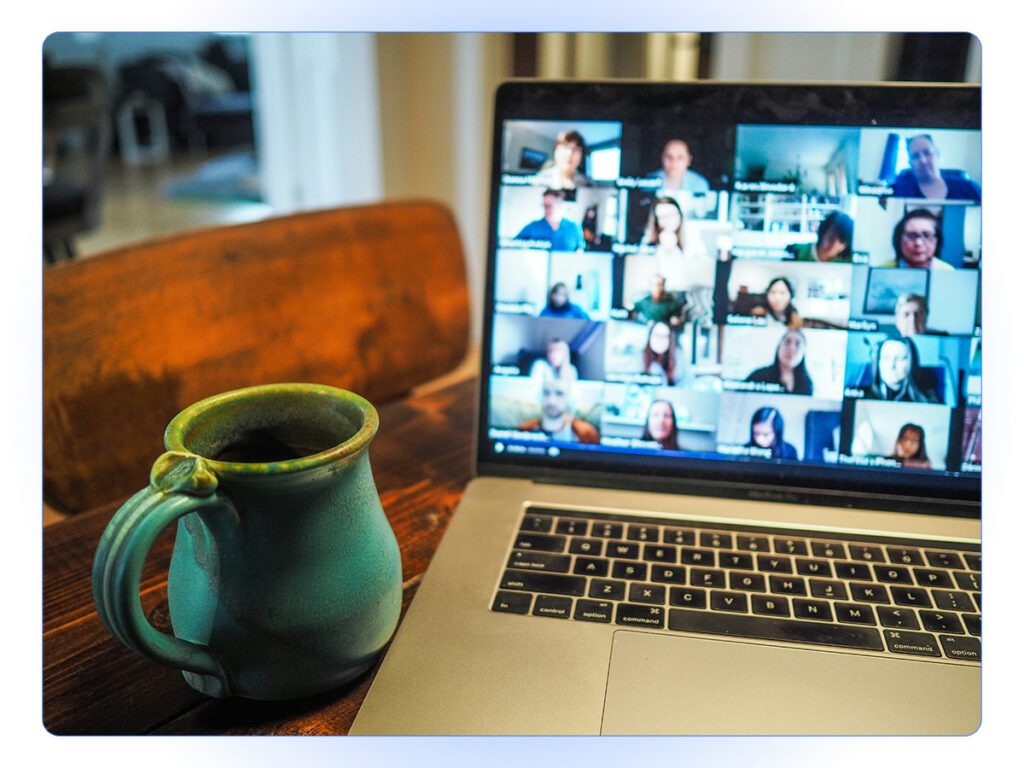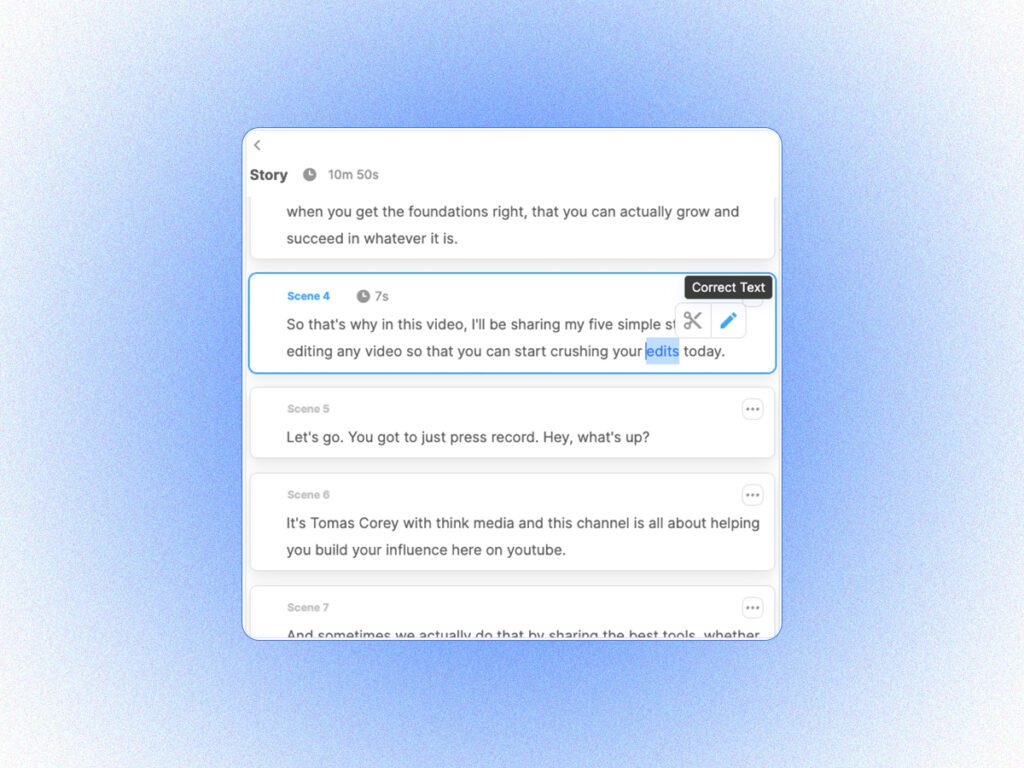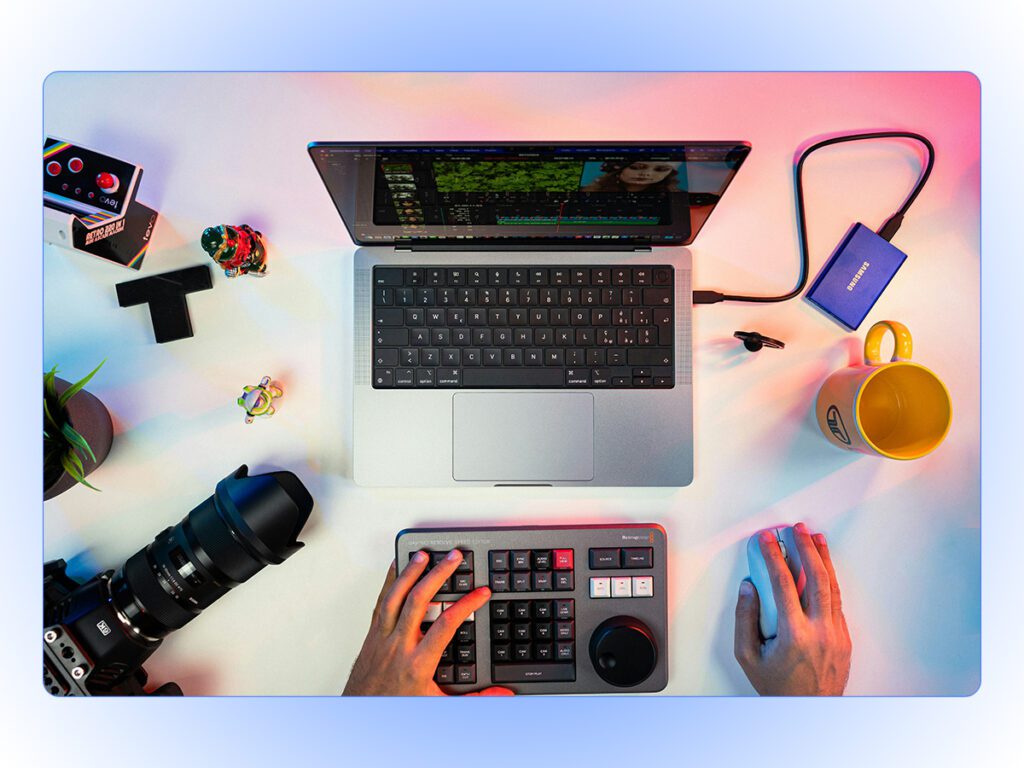The demand for efficient video production is higher than ever. But, is AI video editing the solution? This AI-driven approach promises not only to accelerate the editing process but also democratize it, making professional-quality video accessible to businesses of all sizes. As businesses continue to embrace AI’s potential to enhance productivity, the indispensable value of human creativity remains central, ensuring that each video tells a compelling story. Welcome to the era of AI video editing.
Video Editing, the Traditional Way
Video content remains key in marketing, training, and communication strategies for all types of businesses. However, the journey to producing polished, professional videos has traditionally been complex and time-consuming. Will the world of traditional video editing tools ever give way to something new?
Traditional Tools
Tools like Adobe Premiere Pro and Apple’s Final Cut Pro have long been amont ghe gold standard for video editing. Designed for professionals, these platforms offer a wide array of features for intricate editing tasks, from basic cutting and trimming to advanced color grading and effects. Other professional-grade tools such as Avid Media Composer and DaVinci Resolve round out the toolkit for video editors.

Time and Skill Requirements
The power of traditional video editing software comes at a price: a steep learning curve and a significant investment of time. Mastering tools like Premiere Pro or Final Cut Pro requires hours of viewing tutorials, practicing, and even taking formal training classes. For businesses, this means either investing in training for in-house staff or hiring skilled professionals, both of which can be costly and time-consuming. The complexity of these tools, while beneficial for precision and control, can slow down the production process, especially for projects with tight deadlines.
Limitations for Businesses
While traditional video editing software offers unmatched depth of control, several limitations emerge, particularly for businesses aiming for high productivity and agility:
- Scalability Issues: The time-intensive nature of traditional video editing makes scaling video production a challenge. Increasing output often means linear increases in time and human resources.
- Speed to Market: In a digital landscape where timing can be everything, the slower production cycles of traditional editing can hinder the ability to capitalize on timely opportunities or trends.
- Agility and Flexibility: Adapting content quickly in response to feedback or new information can be cumbersome when each edit requires substantial effort and time.
The AI Revolution in Video Editing
The landscape of video editing is undergoing a transformative shift, thanks to the advancements in artificial intelligence (AI). AI video editing could revolutionize the way we create content, offering a compelling blend of efficiency, precision, and accessibility previously unattainable with traditional video editing methods. This shift is particularly impactful for businesses seeking to produce high-quality video content at scale, without the need for extensive technical expertise.
AI video editing simplifies the editing process by automating tedious tasks, analyzing content for improvements, and even making limited creative suggestions. This not only speeds up the production process but also democratizes video editing, making it accessible to a broader audience. The benefits are clear: faster turnaround times, cost savings, and the ability to maintain a consistent output of high-quality video content.
Visla’s AI Editor
Visla is at the forefront of this AI-driven change. Visla’s platform is designed to streamline the video editing process through its powerful features.
| Feature | Description |
|---|---|
| Text-Based Editing | Edit videos as easily as text documents by making changes to the transcript, which automatically reflect in the video. |
| Scene-Based Editing | Offers control over video production with capabilities to adjust scene length, order, and footage for enhanced storytelling. |
| AI Footage Recommendation | Visla’s AI suggests the best supplemental footage to match the spoken content, making videos more dynamic and engaging. |
| Autocut | Automatically removes pauses, filler words, and repetitive phrases, and can summarize content based on topics or key phrases, streamlining the editing process. |

These features showcase how Visla leverages AI to not just match the capabilities of traditional video editing tools but to surpass them, providing unprecedented ease of use and efficiency. By integrating Visla’s AI editing tools into their workflow, businesses can significantly reduce the time and effort spent on video production, allowing for greater focus on creativity and content strategy.
The Essential Human Touch, Even With AI Video Editing
Even if AI video editing transforms the process of video production, it’s easy to wonder about the role of human creativity in this new paradigm. Despite the efficiency and capabilities AI brings to the table, the essence of storytelling and emotional resonance in video content remains a distinctly human endeavor.
The Art of Video Editing
Video editing transcends the mere assembly of clips and effects; it’s an art form that breathes life into raw footage, crafting narratives that connect with audiences on an emotional level. Despite the advancements in AI, the creative human input is indispensable. The nuances of pacing, the subtlety of transitions, and the alignment of visual elements with the overarching story — these aspects of editing require a human touch.

The essence of storytelling, the ability to evoke emotions, and the articulation of a brand’s voice are facets of video editing that machines cannot fully replicate. AI can streamline processes, suggest improvements, and automate repetitive tasks, but the core of video editing — storytelling and emotional engagement — remains a uniquely human skill.
Where AI Meets Human Creativity
Visla exemplifies how AI video editing tools can support and enhance the creative process without supplanting it. While Visla’s AI capabilities offer significant efficiencies, such as suggesting supplemental footage or automating the removal of filler words, these technologies serve as assistants to the human editor. The AI’s role is to suggest, streamline, and expedite, but the final creative decisions — the choice of what to include, how to structure a narrative, and when to deviate from AI recommendations for artistic reasons — rest with the human editor.
This collaboration between AI and human creativity allows for the production of content that is both high-quality and deeply resonant with viewers. By leveraging AI tools like Visla, editors can focus more on the creative aspects of their work, safe in the knowledge that the more mundane tasks are efficiently handled by the technology. This collaboration ensures that the art of video editing not only persists but flourishes, enhanced by AI rather than diminished by it.

Mark Horiuchi
Mark is a Content Writing Specialist for Visla. In a past life, they’ve worked as a content analyst and product expert for an in-house video content marketing team and a freelance blog writer for a wide range of clients.
